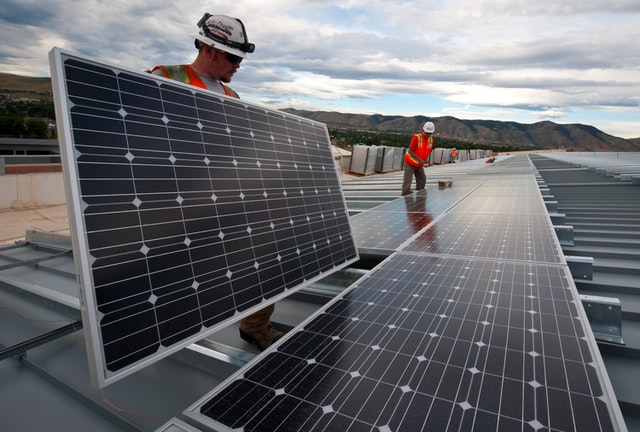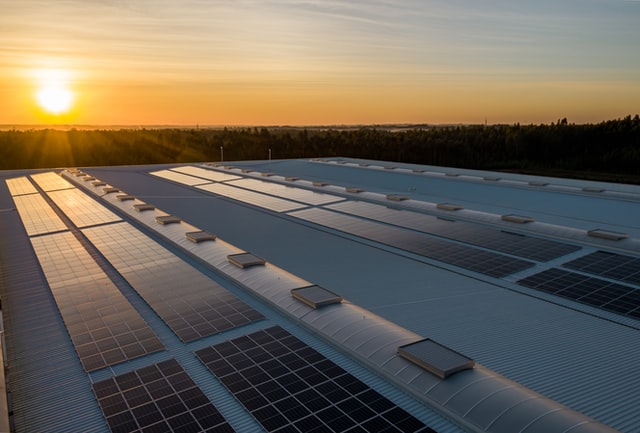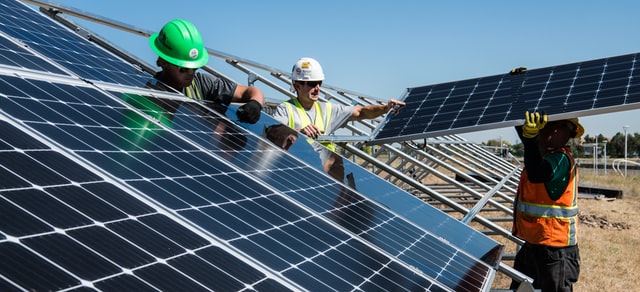Solar car parks, solar shade structures and other opportunistic solar is the future of renewables.
Renewables is no longer a buzzword that we see and hear flashed around at election time. It is also no longer a word that is associated with crippling costs and low ROI. Renewables have come a long way in the last decade, as has the economy that supports them.
The aim of achieving a 100% renewable energy grid, which once seemed like a fanciful dream, now actually can be seen as an imminent reality. As Australia makes inroads into a truly renewable economy, there are economic and technical considerations that need to be made. There are also some very practical realities that need to be addressed to get Australia to a net-zero emissions target.
The last decade has been a boom time for the solar industry, particularly the domestic solar industry. The rapid construction and installation of household solar panels is just one example of this swift growth. It is reported that more than 21% of Australian homes now have solar panels. Large scale solar is also on the rise, with governments pouring money into wind, solar and hydro schemes throughout the country. There has been an increase in overseas investment in Australian solar also. This investment in solar is planned to provide power to our South East Asian neighbours, with a proposed project in the Northern Territory planning to provide 20% of Singapore’s electricity needs in the near future.
Solar batteries are another innovation that has changed the landscape of solar within the last few years. Batteries are becoming more powerful, more reliable and cheaper, due mainly to the innovation of renewables giant Tesla.
The challenge with the Australian solar landscape is that there are plenty of missed opportunities for solar within our urban landscapes without resorting to large-scale solar farms and pumped hydro schemes. The simplest and most cost-effective of these is the solar car park.
What is a solar car park?
A solar car park is a public or private car park covered in solar panels using specific PV structures that capture solar energy. This solar power can then be used by the entity that the car park is attached to, saved in a commercial battery or fed back to the grid. In essence, it provided a localised solar farm that can be used to provide for the local power needs of the organisation that installed the solar car park or the local community.
Solar car parks are a relatively new innovation in Australia, where the traditional push into solar has been at the household rooftop level. They have been popular with shopping centres for the most part. The shopping centre solar car park is an excellent example of dual-use; a centre looking at installing a covered car park or shade structure can convert this into a solar car park. What was once a simple car park then becomes an asset to the company, both in terms of providing an additional amenity for the customer and offsetting the significant power costs of the centre.
Solar car parks have also been used in significant scale developments, such as at universities and smaller-scale commercial applications such as hospitality venues.
What is a solar shade structure?
A solar shade structure is similar in nature to a solar car park; however, it can be applied to any place where a traditional shade structure could be used. Examples of potential locations for solar shade structures are endless, but some of the most common are;
- Sporting Courts, for example, covered basketball courts, tennis courts and semi-open gymnasiums. These are predominately located at schools and in local councils.
- Bowling Greens are prime for converting to solar as they are often run by local clubs who then benefit from Power Purchasing Agreements, which mean the club can erect the structure without capital outlay.
- Train Stations and Public Transport Hubs often have significant shade structures and covered walkways, which can all be converted to solar shade structures.
- Local Parks and Recreation Facilities the benefit for local parks and recreation facilities is simple, park shelters and other shade structures can create their power source, enabling a microgrid for lighting and different power needs.
In essence, the solar shade structure is an opportunistic solar generator that can, with a bit of imagination and careful planning, can be incorporated into our homes, schools, shops and communities with minimal effort.
What are the commercial benefits of a solar car park or solar shade structure?
- Solar Car Parks and Solar Shade Structures Generate Electricity. It may seem like stating the obvious, but the main benefit is, of course, the generation of electricity for either the commercial client, the local council or the community.
- Provide Shade. The other main benefit is, of course, the provision of shade, whether it is for a car park or a shade structure in a public place.
- Opportunity for EV Charging Stations. Solar Shade Structures and Solar Car Parks can be installed with EV Charging docks and stations. This is, of course, an essential point with the rise of electric vehicles and the cost of at-home charging stations; the ideal is to be able to charge a car fast using free solar, and this is what can be achieved relatively simply.
- Corporate Responsibility. Corporate responsibility targets for renewable energy are now fairly standard across a variety of industries. What is genuinely virtuous about commercial solar options in the form of solar car parks or solar shade structures is that they are not just about buying or sourcing renewable energy to meet targets but are about the actual generation of renewable energy.
As we move forward as a country into a future that is both sustainable and renewable, it is crucial to look closely for energy generation opportunities. Whilst there is merit in large scale renewable projects, they should not be favoured over grassroots options that consider our local built environments and how we can manipulate them for energy generation.

